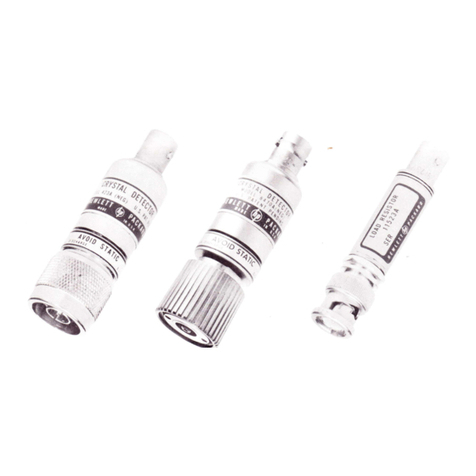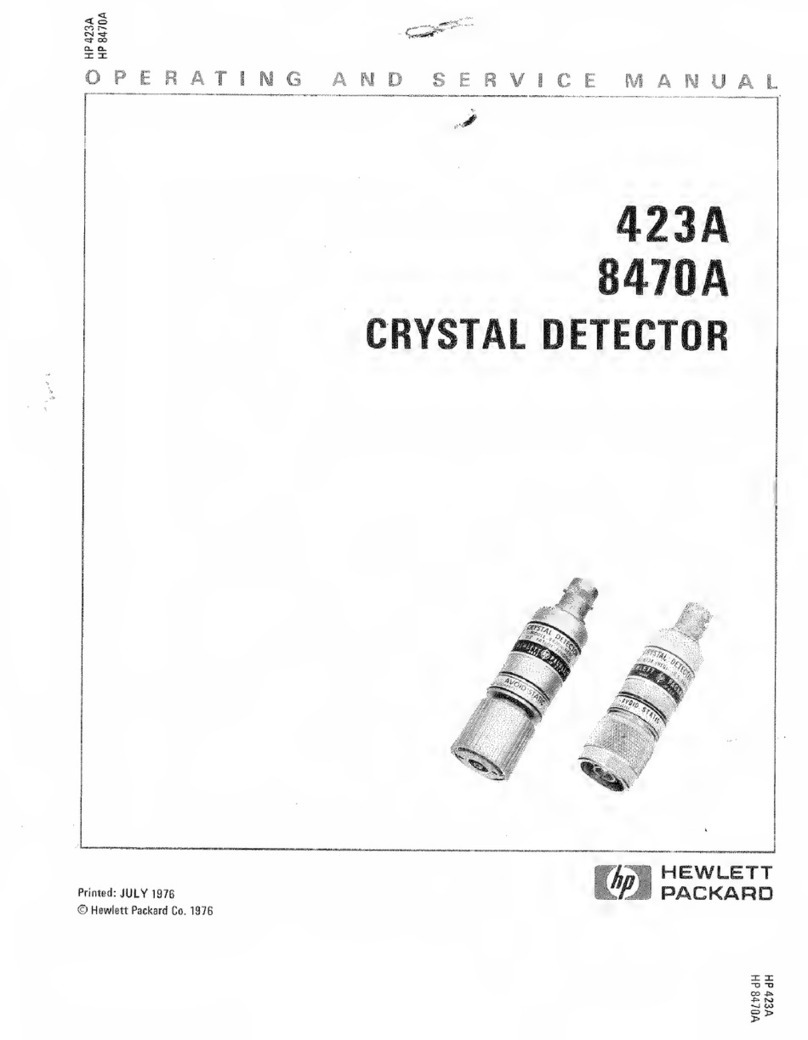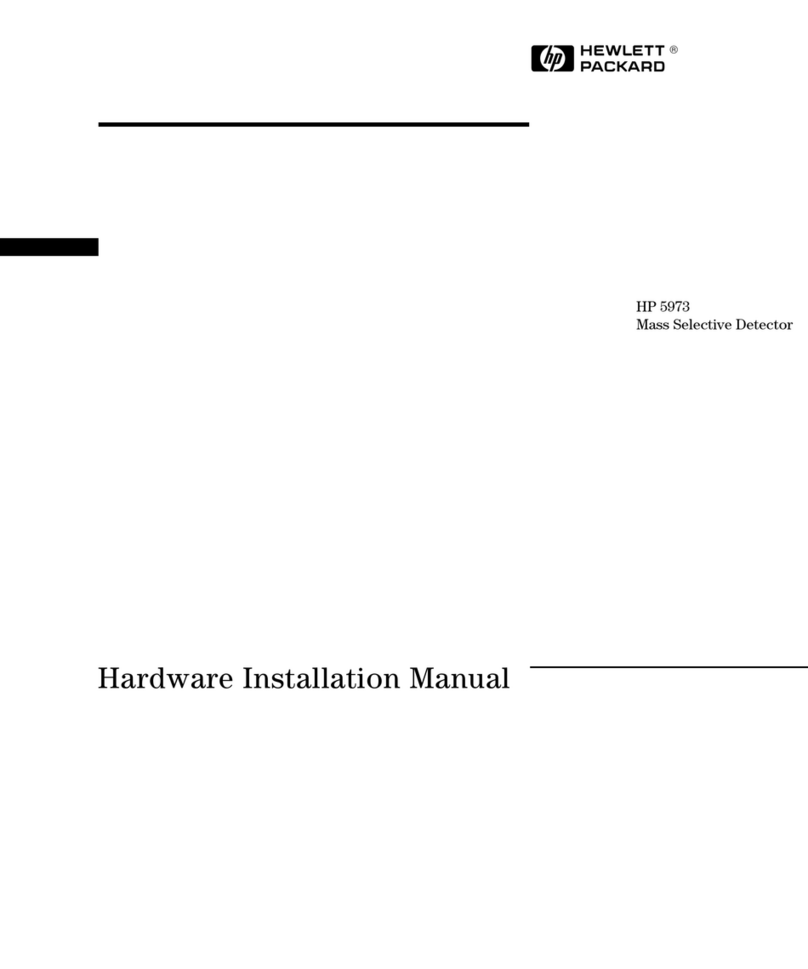
© Copyright 1998
Hewlett-Packard Company
All Rights Reserved.
Reproduction, adaptation, or
translation without prior
written permission is
prohibited, except as allowed
under the copyright laws.
Document History
Publication number
G1099-90027
First edition, 11/98
Printed in USA
Warranty
The information contained in
this document is subject to
change without notice.
Hewlett-Packard makes no
warranty of any kind with
regard to this material,
including, but not limited to,
the implied warranties of
merchantability and fitness for
a particular purpose.
Hewlett-Packard shall not be
liable for errors contained
herein or for incidental or
consequential damages in
connection with the furnishing,
performance or use of this
material.
Hewlett-Packard assumes no
responsibility for the use or
reliability of its software on
equipment that is not
furnished by Hewlett-Packard.
Instrument
Identification
Each HP 5973 Mass Selective
Detector (MSD) is identified
by a unique 10-character serial
number. This serial number is
located on a label on the lower
left side near the front of the
instrument. On CI upgrades, a
serial number is located on the
flow module.
When corresponding with
Hewlett-Packard about your
instrument, be sure to include
the model number and both
full 10-character serial
numbers.
Write the serial number of your
HP 5973 MSD here for
reference:
MSD serial #:
________________________
HP 5973 MSD version
HP 5973 MSDs are equipped
with either a diffusion pump or
a turbomolecular (turbo)
pump. Chemical Ionization is
available for the turbo MSD
only. The serial number label
displays a product number that
tells what kind of MSD you
have:
G1098A = Diffusion pump
G1099A = Turbo pump
G1999A = CI (turbo pump)
Noise Declaration
Deutsch
LpA << 70 dB am Arbeitsplatz
normaler Betrieb nach EN
27779:1991
English
LpA << 70 dB operator
position normal operation per
ISO 7779:1988
Manual Conventions
Cautions
Cautions call attention to
procedures which, if not
correctly performed or
adhered to, could result in
damage to the instrument.
Warnings
Warnings call attention to
procedures which, if not
correctly performed or
adhered to, could result in
personal injury.
Part Numbers
In this manual, Hewlett-
Packard part numbers are
generally listed in parentheses
after the name of the part or in
tables in the Parts chapter.
Most Hewlett-Packard part
numbers are either four-digit-
by-four-digit (1234-1234)
numbers or five-digit-by-five-
digit (12345-12345) numbers.
A few tools and supplies listed
have no part numbers and are
not available from Hewlett-
Packard. Most of these can be
obtained from laboratory
supply companies.
Safety Information
Safety Symbols
(on equipment)
Safety class
The HP 5973 Mass Selective
Detector (MSD) is a Safety
Class I instrument and has
been designed and tested in
accordance with IEC
Publication 1010-1 Safety
Requirements for Electrical
Equipment for Measurement,
Control, and Laboratory Use.
WAR NI NG
Connecting an MSD to a power
source which is not equipped
with a protective earth contact
creates a shock hazard for the
operator and can damage the
instrument. Likewise,
interrupting the protective
conductor inside or outside the
MSD or disconnecting the
protective earth terminal
creates a shock hazard for the
operator and can damage the
instrument.
WAR NI NG
Make sure that only fuses with
the required current rating and
of the specified type are used
for replacement. The use of
incorrect or makeshift fuses or
the short-circuiting of fuse
holders creates a shock hazard
for the operator and can
damage the instrument.
WAR NI NG
Any adjustment, maintenance
or repair of the opened
instrument while it is
connected to a power source
should be avoided if possible
and, if required, should be
carried out only by trained
persons who are aware of the
hazards involved.
Safety Information is contin-
ued on the inside of the back
cover.
;Refer to operating
instructions
=Indicates hazardous
voltage
+Indicates hot surface
3Indicates earth
(ground) terminal

































